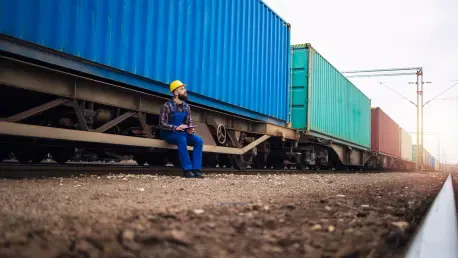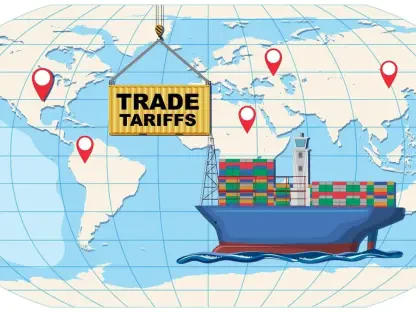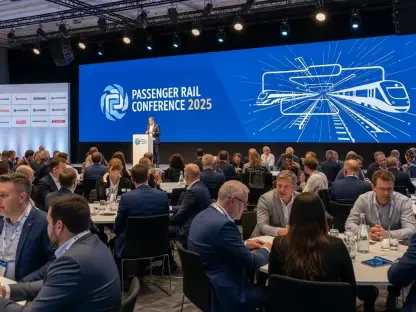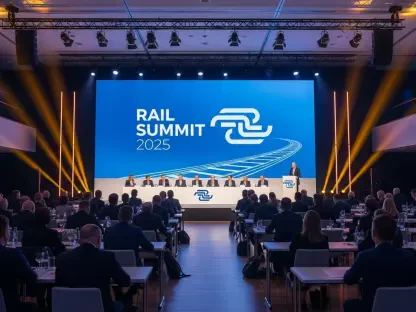I’m thrilled to sit down with Rohit Laila, a veteran in the logistics industry with decades of experience spanning supply chain management and delivery. Rohit’s deep knowledge and passion for innovation and technology in the sector make him the perfect person to shed light on the pressing issues facing rail freight, particularly in the context of recent advocacy efforts in Australia. Today, we’ll explore the urgent need for reform in rail freight, the challenges of declining market share, the environmental benefits of shifting to rail, and the strategic recommendations for transforming the industry into a more sustainable and efficient network.
Can you walk us through the motivations behind the recent push for rail freight reform in Australia, particularly why industry leaders felt the need to meet with politicians in Canberra?
Absolutely. The rail industry is at a critical point, and the meetings in Canberra were about getting the message across to decision-makers that reform can’t wait. We’re seeing a decline in rail’s role in freight, and that’s a problem for productivity, safety, and sustainability. The goal was to highlight these issues directly to policymakers and push for immediate action to support the national freight network. It’s about ensuring rail gets the focus it needs to meet growing demand and contribute to the economy.
What makes the current situation so urgent for rail freight, and why is reform needed now more than ever?
The urgency comes from a stark reality: rail’s share of freight is shrinking dramatically. For instance, between major corridors like Sydney and Melbourne, it’s down to just 2%. That’s a huge loss when you consider the efficiency and capacity rail can offer. The challenges include outdated infrastructure, inconsistent regulations across regions, and competition from road transport. Without reform, we risk further inefficiencies in the supply chain, higher costs, and missed opportunities to reduce emissions.
There’s talk of a ‘once-in-a-generation opportunity’ to transform the freight sector. What does that phrase mean to you in the context of rail?
It’s about timing. We’re at a moment where the government is prioritizing economic reform, and freight is a key part of that puzzle. This alignment gives us a rare chance to push for big changes—think modernized infrastructure, streamlined policies, and incentives for sustainable transport. If we miss this window, it could be decades before we get another shot at reshaping the industry to meet future needs.
One of the key recommendations for reform is achieving national consistency in policy and regulations. Why is this such a priority for the rail industry?
Inconsistent rules across states and regions create a nightmare for rail operations. You’ve got different standards, safety requirements, and processes that slow everything down and increase costs. National consistency would mean smoother interoperability—trains moving seamlessly across borders without delays. We need strong leadership at the federal level to coordinate and standardize these policies so the industry can operate as a unified network.
Another focus is on investing in the national rail network. Can you elaborate on what kind of upgrades are needed to make a real difference?
We’re talking about modernizing tracks, improving signaling systems, and enhancing terminals to handle more freight efficiently. Many parts of the network are old and can’t support the speed or volume we need today. Upgrades would boost reliability—fewer breakdowns, fewer delays—and make rail a more attractive option. A long-term investment plan is crucial because sporadic funding just doesn’t cut it; we need sustained commitment to build a resilient system.
Shifting freight from road to rail is also a big part of the reform agenda, especially for cutting emissions. How significant is rail’s potential to reduce environmental impact?
Rail’s environmental advantage is massive. It produces far less carbon pollution compared to road transport—about 16 times less, which is staggering when you think about it. If we can move more freight onto trains, we’re directly slashing emissions from the transport sector, which is a huge win for sustainability goals. It’s not just about numbers; it’s about creating a cleaner future while still meeting economic demands.
The idea of creating a level playing field between road and rail freight has been highlighted as well. What does that look like, and why is it important?
Right now, road often has an unfair edge due to pricing structures and policies that don’t account for the true cost of transport. Competitive neutrality means adjusting those levers—whether it’s through pricing, taxes, or regulations—so that rail and road are judged on equal terms. This lets customers choose based on what’s best for their freight needs, not just what’s artificially cheaper. It’s about fairness and efficiency in the market.
With the recent launch of a national strategy for freight and supply chains, how do you see this influencing the future of rail freight?
It’s a positive step because it signals that the government is paying attention to freight as a national priority. For rail, it could mean more focus on addressing our challenges—like infrastructure gaps and mode shift incentives. But the strategy is just a starting point. We need concrete actions and timelines to ensure rail gets the support to grow its share of freight and contribute more to the economy, which already sees $6.3 billion annually from the sector.
Looking ahead, what is your forecast for the future of rail freight if these reforms are implemented—or if they’re delayed?
If reforms happen soon, I see rail freight rebounding with a stronger network, higher efficiency, and a bigger role in reducing emissions. We could see rail’s share grow, supporting jobs and economic growth while easing road congestion. But if delays persist, the decline will continue—more freight on roads, higher pollution, and a missed chance to build a sustainable system. The stakes are high, and I’m hopeful we’ll see action before it’s too late.









